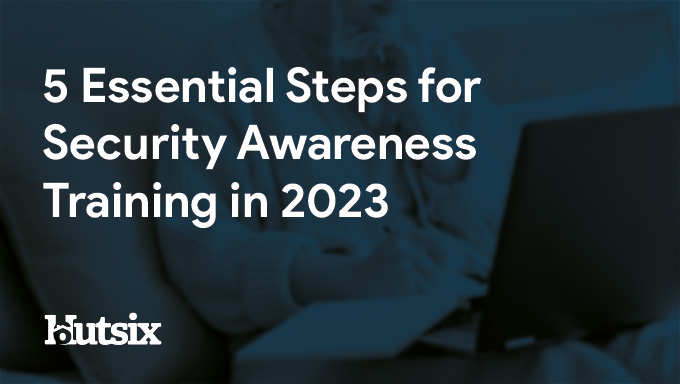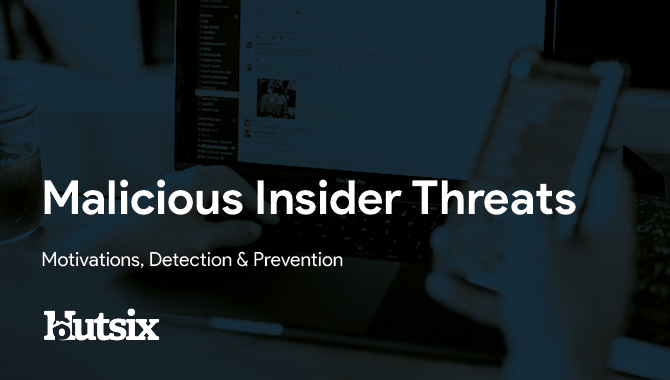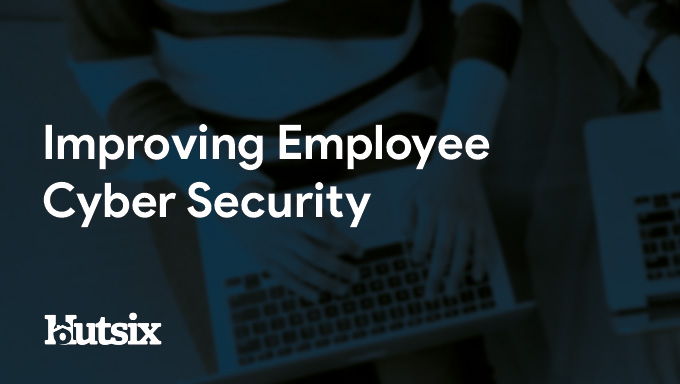How do you Train Employees for Information Security?
The role of employees as the first line of defence against cyber threats is hard to over-emphasise. Beyond a mere compliance requirement, employee training plays a crucial role in fortifying an organisation against a wide variety of potential threats.
Delving into various approaches for training employees for information security, this blog offers insights into effectiveness and applicability, as well as exploring other tips for increasing engagement, retention, and improving your overall information security posture. Let’s first address some common questions regarding employee security training.
Looking for the right security training for your organisation?
Talk to one of our experts about effective training now.
Training for Data Security
What is the purpose of training employees for information security?
Information security training isn't just a checkbox on the compliance list; it's the shield protecting your organisation's vital assets. Let's unravel the threads of its purpose:
Avoiding Threats and Data Breaches: Regardless of your best efforts, your organisation will inevitably face numerous information security threats. Standing between you and disaster are your employees. Training empowers them to recognise and thwart potential threats, fortifying your organisation.
Financial Losses: In the digital realm, every byte is precious. Training equips your team to navigate the security landscape safely, preventing financial losses that could otherwise drain your organisation's resources.
Compliance: Navigating the labyrinth of regulations can be daunting. Training ensures your team understands and adheres to compliance requirements, shielding your organisation from legal pitfalls.
Reputation Damage and Trust: A breach not only spills sensitive data but erodes trust. Training is your reputation's bodyguard, ensuring your team understands the impact of their actions on the organisation's image and fostering a culture of trust.
What does training generally look like?
Training isn't a one-size-fits-all affair; it's a bespoke solution tailored to your organisation's needs. While some are considered more effective than others, it's worth understanding each of these following approaches.
Classroom: A more traditional approach, where instructors impart knowledge face-to-face. While this approach can lead itself to specialised training, this method can be expensive, time consuming, and difficult to scale.
Basic Web-based: The digital classroom, offering flexibility and accessibility, enabling employees to grasp fundamental concepts at their own pace.
Interactive Web-based: Transforming learning into an engaging experience, interactive web-based training invites participation, making the process memorable and effective.
Simulated Phishing: Creating a digital realm where employees face simulated phishing attacks, preparing them for real-world scenarios while maintaining security.
Read more: Explained: The Different Types of Security Awareness Training
Getting Employees to Care about Cyber Security
Motivating employees and users to not only understand, but also care about cyber security is not an easy task, though there are several steps that are essential.
1) Embedding Security into Your Organisation's Culture
Transforming cyber security from a mere practice to a cultural cornerstone requires a holistic approach:
Cultural Integration: Make security an integral part of your organisation's DNA. Embed it in every process, conversation, and decision to create a unified front against potential threats.
Lead by Example: Leadership sets the tone. When executives prioritise and actively participate in security measures, it sends a powerful message that resonates throughout the organisation.
Read More: 5 Steps to Foster an Effective Information Security Culture
2) Effective and Engaging Training
Beyond imparting information, effective training should engage users and leave a lasting impact:
Connection: Create scenarios that user can relate to, and feel is personally applicable. When employees feel the consequences of their actions, they're more likely to internalise the importance of cyber security.
Storytelling Techniques: Share real-world examples and anecdotes that illustrate the repercussions of security lapses. Stories make theoretical concepts tangible and relatable.
3) Security Training Aligned with Organisational Values
Bridge the gap between cyber security and your organisation's ethos:
Mission Alignment: Illustrate how a secure environment aligns with the broader mission and values of your organisation. When employees see the bigger picture, they're more inclined to actively contribute.
Tailored Training: Customise training to resonate with your organisation's unique culture. This ensures that security measures don't feel like an imposition but a natural extension of existing values.
4) Ongoing Training
Cyber threats evolve, and so must your team's knowledge and skills:
Continuous Learning: Cyber security is not a one-stop destination. Implement ongoing training to keep employees abreast of the latest threats and reinforce good security practices.
Adaptability: Foster a culture of adaptability. As new technologies and threats emerge, your team should be equipped to evolve alongside them.
Read More: How Often Should Security Awareness Training be Conducted?
5) Enforcing Policies
Policies are the backbone of security, but their effectiveness relies on consistent enforcement:
Transparent Accountability: Clearly communicate the consequences of policy violations. Transparency fosters a sense of accountability, reinforcing the importance of compliance.
Recognition and Rewards: Acknowledge and reward adherence to security policies. Positive reinforcement reinforces desired behaviours and motivates employees to stay vigilant.
Which Security Awareness Topics are Essential for Employees?
In the ever-shifting landscape of cyber threats, knowledge is your greatest shield. Equip your employees with the essentials to navigate the digital battlefield:
- Phishing: Unravel the art of deception. Train your team to spot phishing attempts and fortify your defences against this ever-present threat.
- Password Security: The key to digital fortresses. Instil the importance of robust password practices to safeguard sensitive information.
- Social Engineering: Understand the human factor. Arm your employees with the knowledge to recognise and resist manipulative tactics employed by cybercriminals.
- Data Protection: Guard your digital assets. Educate your team on the significance of securing and handling sensitive data with the utmost care.
- Ransomware: Facing the digital hostage crisis. Equip your organisation to detect, prevent, and respond to ransomware attacks, securing your assets from would-be hijackers.
Read More: 15 Essential Awareness Training Topics for 2024
Security Awareness for your Organisation
Enjoyed our blog? Learn more about how Hut Six can help improve you security awareness with training and simulated phishing. Start a free trial now, or book a meeting with one of our experts.
Featured
What is the Impact of Security Awareness Training? - Hut Six
Discover the Impact of Security Awareness Training: Prevent breaches, foster culture, & build trust.
What is Personal Data?
Learn about personal data, its types, and significance in data protection. Explore general and special category data, as well as pseudonymised and anonymised data under the GDPR.
Who Does GDPR Apply To?
Who Does GDPR Apply To? And Other Data Protection Questions/ Information Security blog by Information security awareness provider Hut Six Security.
Does ChatGPT Pose a Cybersecurity Risk
In this blog post, we explore whether AI chatbots like ChatGPT pose a cybersecurity risk. We delve into the potential vulnerabilities and threats posed by chatbots, and discuss measures that can be taken to mitigate these risks. Read on to discover how you can ensure the security of your organisation's chatbot interactions.
How Do I Get Cyber Essentials Certified?
Learn how to obtain Cyber Essentials certification and enhance your organization's cybersecurity posture with our comprehensive guide. Our expert insights will help you navigate the certification process to meet the requirements for Cyber Essentials.
Essential Steps for Security Awareness Training
Starting a security awareness training campaign? Here are 5 essential steps to help ensure information security success.
Malicious Insider Threats - Meaning & Examples
Malicious insider threats can cause massive problems. Here we examine some of the motivations behind attacks and methods of detection organisations can use to reduce risk.
5 Biggest Breaches of 2022 (So Far)
Five of the biggest and most significant data breaches, hacks, and information security attacks of 2022 (so far).
Auditing for GDPR Compliance
Questions to consider when auditing your business or SME for General Data Protection Regulation (GDPR) compliance.
Improving Employee Cyber Security
With human error responsible for many breaches and attacks, we offer some helpful areas for improving employee security compliance.












